Truck camping is a great way to enjoy the outdoors and spend quality time with friends and family. However, it can also be challenging to pack everything you need and ensure you are prepared for any situation – but not with these truck camping hacks!
Truck Camping Hacks
It’s always helpful to have a few truck camping hacks up your sleeve for a more enjoyable and stress-free experience. Here are a few you wish you had known sooner:
Article Overview
1. Use a Rooftop Tent
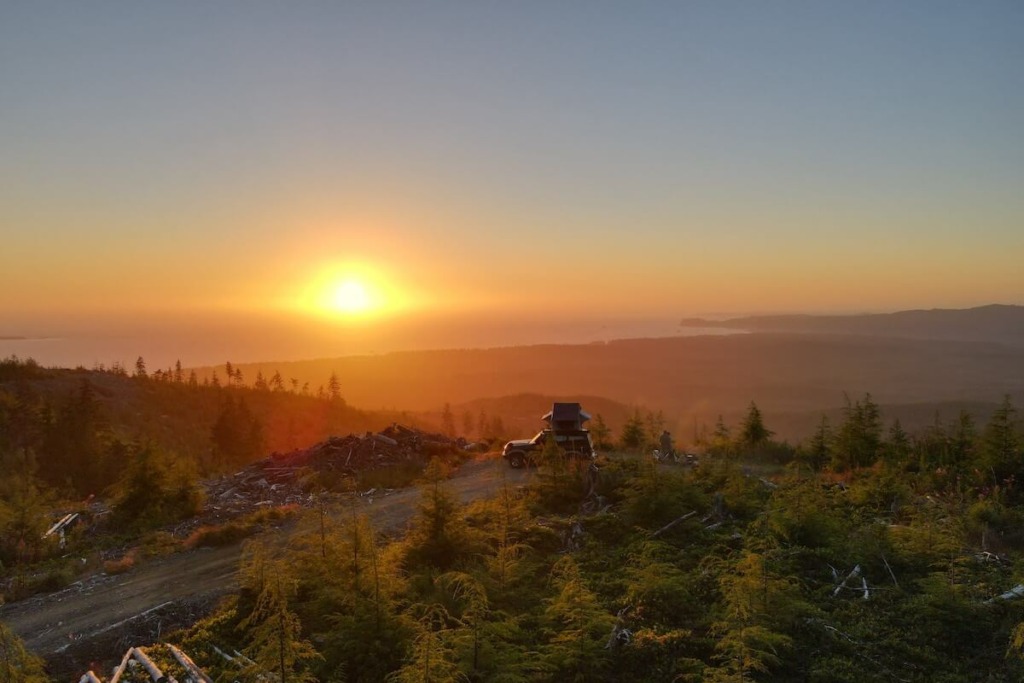
Setting up a tent can be a hassle, especially when dealing with poles and stakes. However, using 4 person rooftop tents can make things much easier. These tents are designed to be mounted on the roof of your vehicle and can be set up and taken down quickly and easily. They offer a great view and can keep you off the ground, away from pests and critters.
If you are in the market for a new tent, consider a 4-person rooftop tent. These tents are easy to set up and take down and provide a comfortable and secure sleeping space. You will also have a great view of the stars and be able to stay off the ground away from pesky insects and other critters.
2. Pack a Portable Camp Stove for Easy Cooking
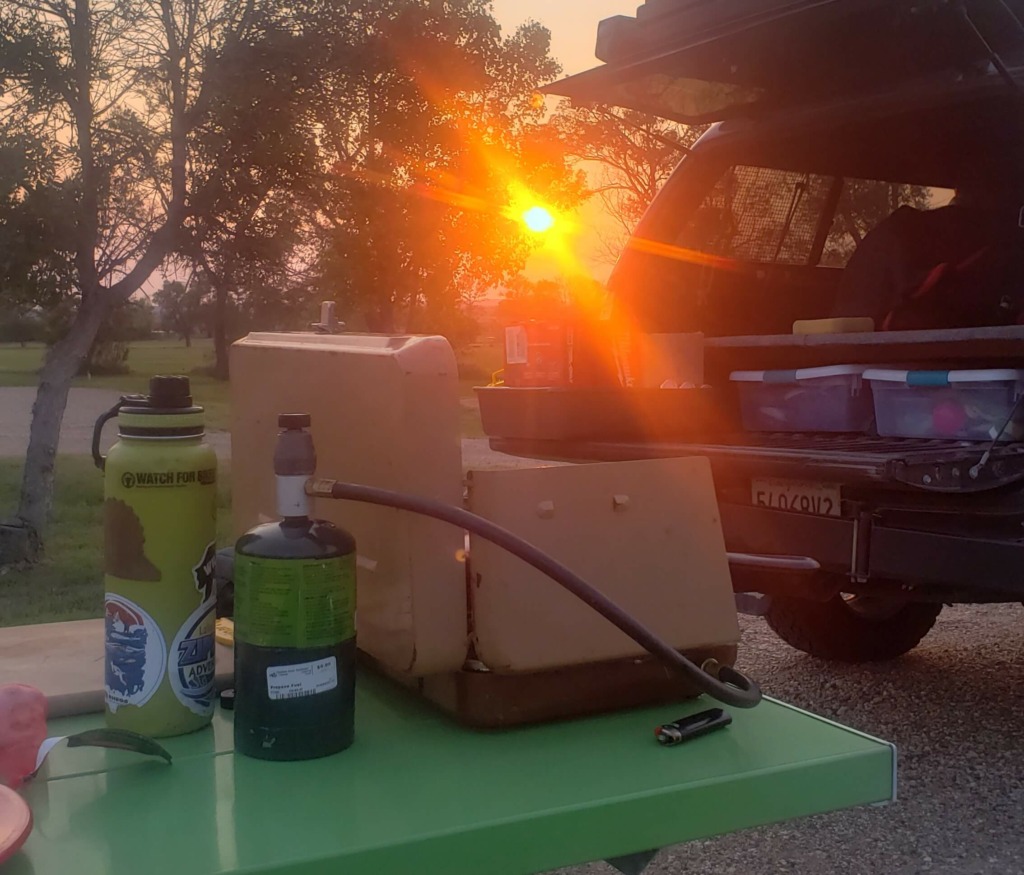
Cooking over an open fire can be fun, but it’s only sometimes practical. Packing a portable camp stove can make meal prep a breeze. Look for a compact and easy stove to set up, and remember to bring extra fuel.
A portable camp stove is a great investment for any camping trip. With a stove, you can cook meals quickly and easily without relying on an open fire. Plus, you can control the temperature more easily, which can help ensure that your food is cooked evenly.
3. Use a Headlamp for Hands-Free Lighting
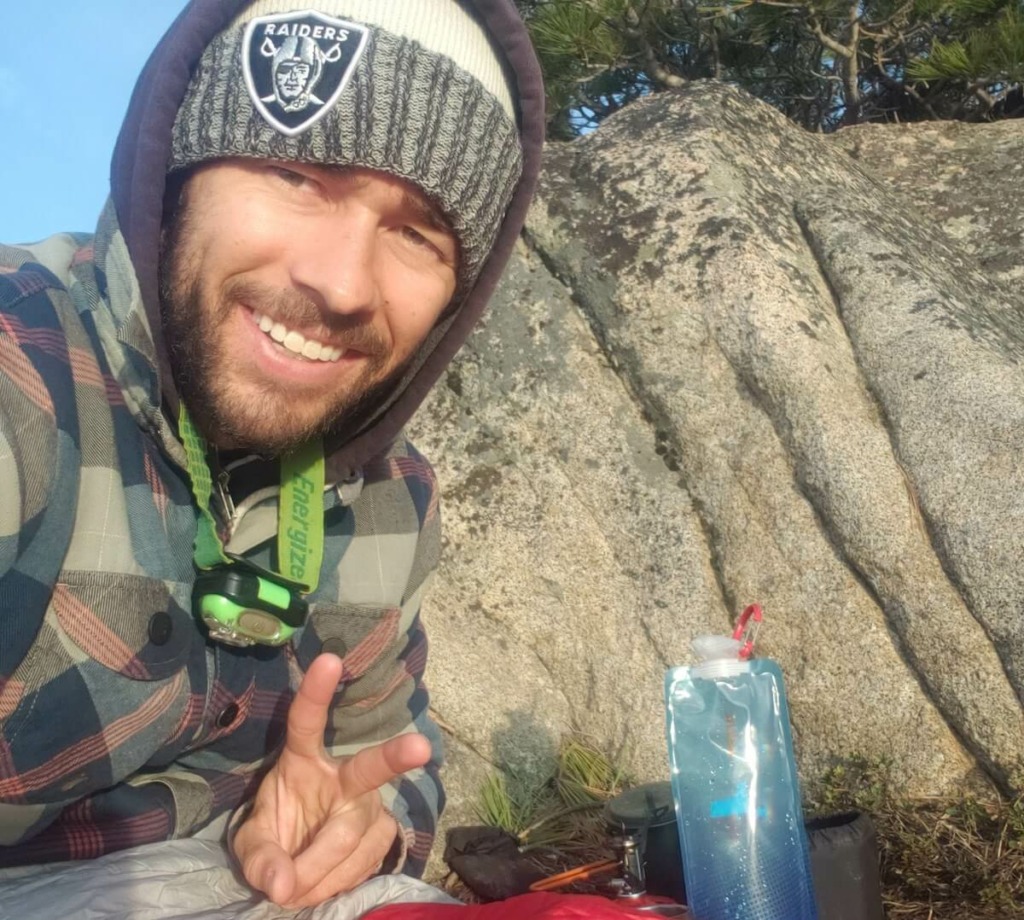
Holding a flashlight while setting up camp or cooking dinner can be frustrating. A headlamp is a great solution that lets you keep your hands free while still having the light you need. Make sure you bring extra batteries or a rechargeable option.
A headlamp is an essential camping accessory. It provides hands-free lighting that can be incredibly useful when setting up camp or cooking dinner after dark. Plus, it’s much easier to use than a flashlight since you don’t have to worry about holding it in your hand. Just strap it on and go!
4. Bring a Portable Water Filter for Clean Drinking Water
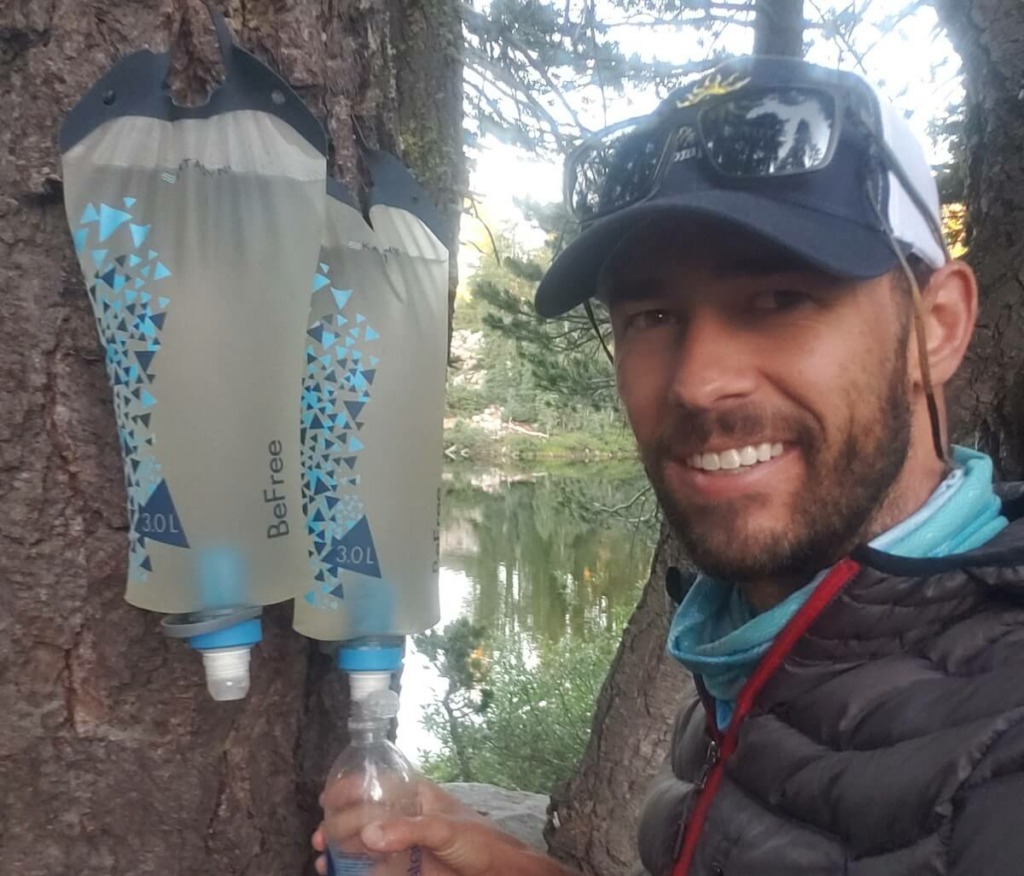
Access to clean drinking water is essential when camping, but it’s only sometimes available. A portable water filter can help ensure that you have access to clean water anywhere. Look for a filter that is lightweight and easy to use.
A portable water filter is a must-have for any camping trip. It allows you to filter water from streams, lakes, and other sources, so you don’t have to rely on bottled water or tap water that may be unsafe to drink. Plus, it’s much more environmentally friendly than buying bottled water.
5. Use a Cooler and Dry Ice to Keep Food Fresh
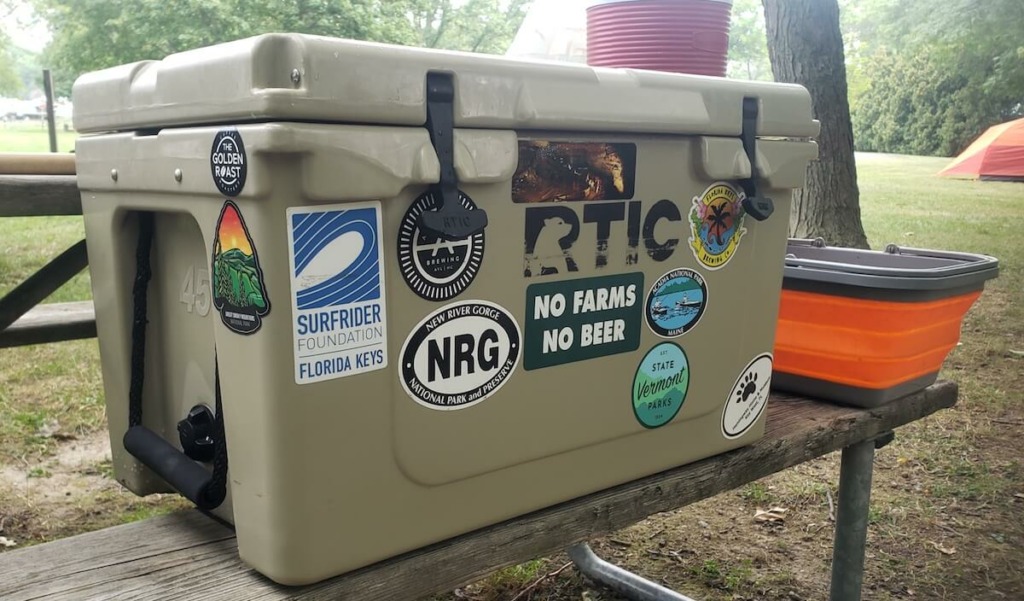
Keeping food fresh while camping can be a challenge, especially if you are in a hot climate. Filling a cooler with dry ice can help keep your food fresh for longer. Make sure you pack your cooler strategically to ensure maximum insulation.
A cooler and dry ice can be a lifesaver when camping. It helps keep your food fresh for longer and can even extend the life of your ice. Just pack your cooler strategically and ensure it’s properly insulated to get the most out of your dry ice.
6. Bring a Power Bank for Charging Devices
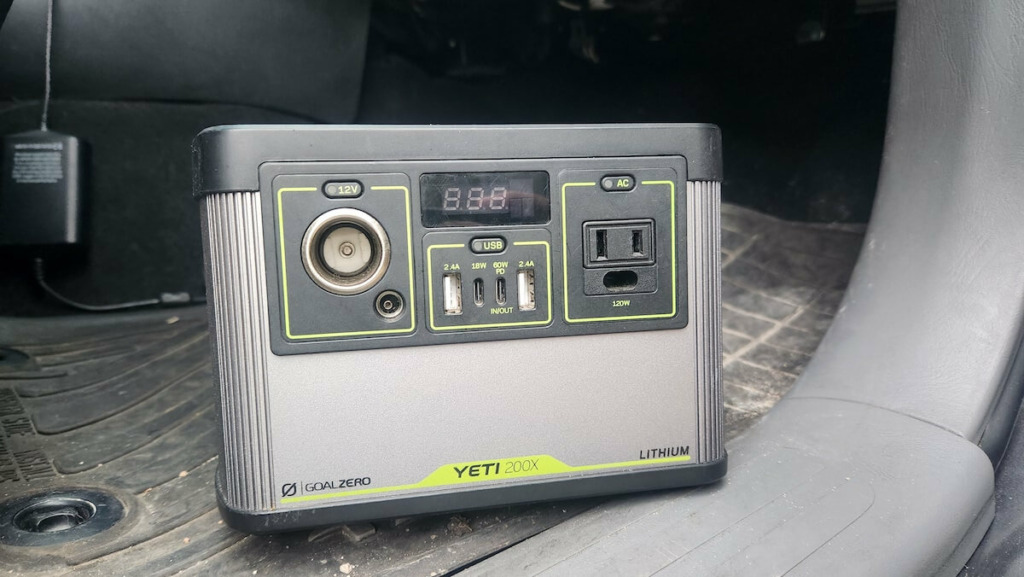
While camping is all about disconnecting from technology, bringing a power bank for emergencies is still a good idea. Look for a power bank that is lightweight and has multiple charging ports.
A power bank can come in handy in various situations while camping. It can help you keep your phone charged in case of an emergency, or it can allow you to charge other devices like cameras or GPS units. Just make sure you choose a power bank that is lightweight and easy to carry.
7. Convert Your Truck Temporarily
If you are using your vehicle to sleep in while camping and choose to not get a rooftop tent, you may want to look into temporarily converting the back of it. A simple way to do this is to take the seats out of the back before you leave for your trip so that you are left with a flat surface.
Doing this can allow for safe sleep as you have the comfort of knowing you are in a locked vehicle. Though, if you don’t have space in your vehicle but have a bed on the back, you can set up a normal tent on it.
8. Use Flooring
No matter where you decide to sleep on a camping trip, you will want to make it the most comfortable you can.
One easy way to ensure that you get better sleep is to use some type of soft flooring, such as foam floor tiles. You only need to use a few to fill out the square footage of where you are sleeping, and they allow for easy transport.
9. Use an Air Mattress or Camping Pad
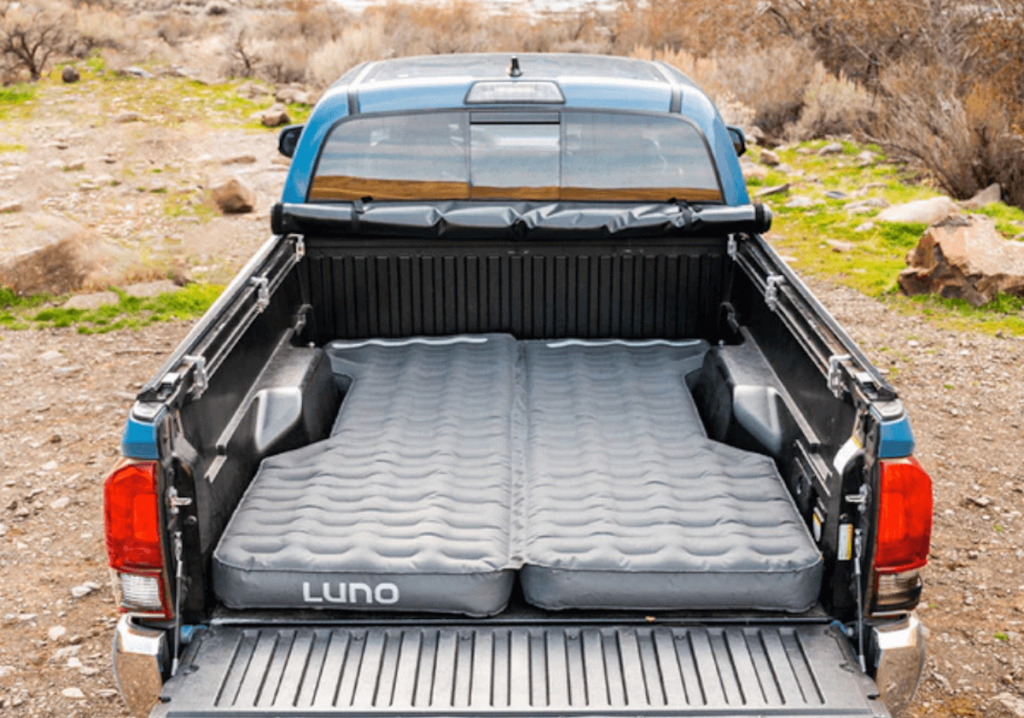
If you are looking for even more comfort, you may want to look into investing in a good-quality air mattress or camping pad. Many companies make these products specifically for campers so that they are simple to use and pack light.
10. Invest in a Good Sleeping Bag
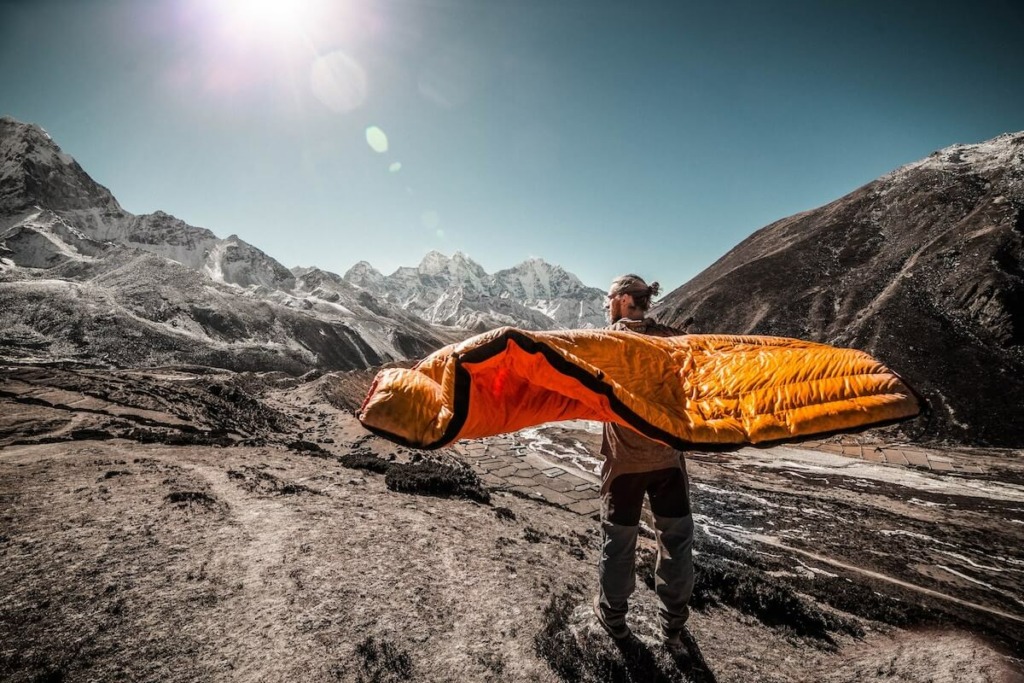
Even when you have a comfortable floor, you will want to make sure you have an excellent sleeping bag. This is where most campers tend to splurge, as not doing so can allow for a restless night of sleep.
Sleeping bags can also come with features that allow you to sleep in cold conditions, with many brands having levels that you can choose from depending on how cold you expect conditions to be.
11. Learn Ahead of Time About Dangers
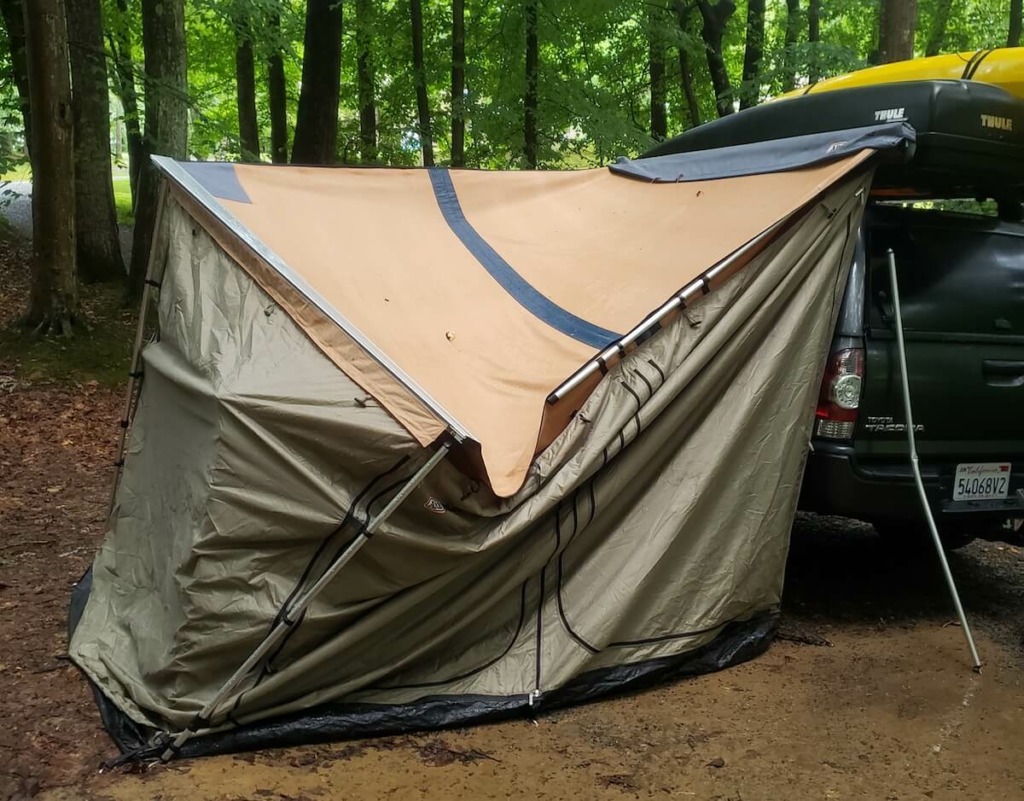
When camping, you never really know what you will encounter. Wildlife is usually the first thing that comes to people’s minds, so you will want to make sure you take all precautions in order to keep yourself safe.
It is important to research what type of wildlife lives in the area you are planning to camp in so that you know what to look out for. One thing to remember is to always keep food locked away so that you aren’t attracting bears or other animals.
12. Get a Hammock
Hammocks have become extremely popular over the last ten or so years, especially with campers. Investing in a good-quality hammock can allow you to enjoy your time relaxing while resting between trees with a great view.
Some people even choose to sleep in a hammock rather than a tent with a sleeping bag. There are even hammocks made specifically for trucks now that attach to a trailer hitch. These hammocks look more like seats, but they still allow for the same feel.
13. Create a DIY Washing Station
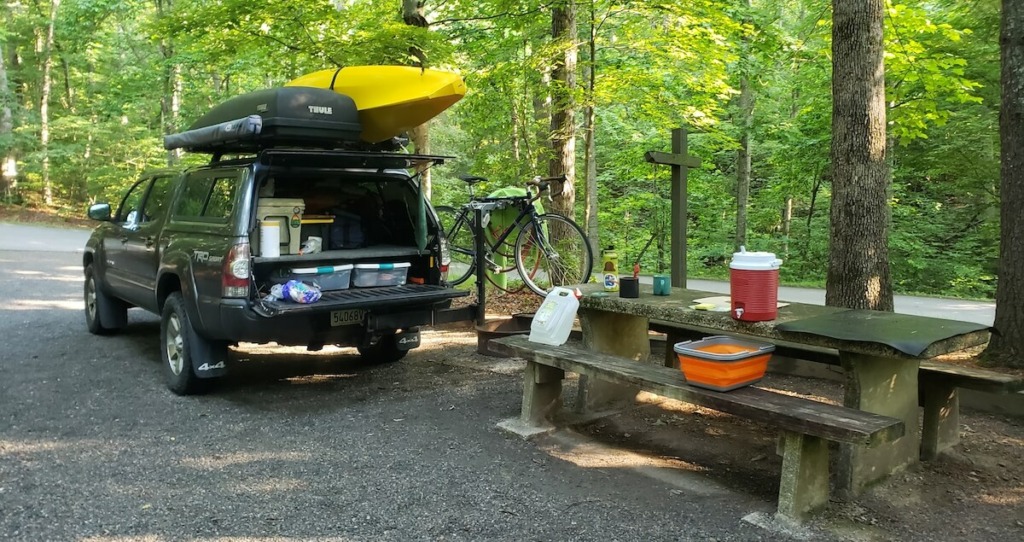
While camping, you will probably want to take a shower or at least wash your hands at some point. If you are not at a more frequented campground, there may not be a shower house for you to go to.
In this case, you can easily create your own washing station by taking a used gallon-sized laundry detergent dispenser. You will want to make sure that it is completely clean, but you can fill it up with water before you leave so that you can have enough to wash your hands and possibly take a short shower.
14. Bring Some Firestarters
There are many different types of firestarters you can buy or make yourself. If you would rather buy a starter, you can find boxes of special logs at almost any major store. If you are looking to save money and do it yourself, there are a few options.
One way to make a firestarter is by saturating cotton balls in Vaseline, then storing them in an airtight bag until they are ready to be used. Another simple way is to take some lint from your dryer and stuff it into an empty toilet paper roll.
15. Freeze Extra Water
A problem that a lot of campers run into is how to keep their food and drinks cold. An easy way to get around this is to freeze a few gallon-sized water jugs and keep them in your coolers.
This will ensure that your food and drinks stay cold while also not getting water all over everything. The good thing about this is that when the ice melts, you can use the water to drink, wash your hands, or even take a shower.
16. Create More Lighting
If wearing a headlamp isn’t cutting it, you can try to create a more encompassing light by attaching your lamp to a jug of water with the light facing inwards. This will allow you to still have hands-free light, but also be able to see better.
17. Bring Heat for the Cold
If you decide to camp while it’s cold out, you will probably suffer from having to deal with the frigidness. One way to combat this is to use a heating source or even multiple. One popular thing to use is Hot Hands, as they’re easy to come by and work great.
Another way is to fill a Nalgene water bottle with hot water and keep it close to you at night. Though, you will want to make sure with whatever you choose to use that you don’t accidentally burn yourself.
18. Keep a Basket at Your Tent Entrance
When you are camping, you are bound to get your feet dirty. It can be annoying to deal with dirt or mud inside of your tent or vehicle, so you can easily combat this by keeping a basket nearby. Whenever you are about to go inside, you can take your shoes off, place them in the basket, and know that your area is kept clean.
19. Protect Your Zippers
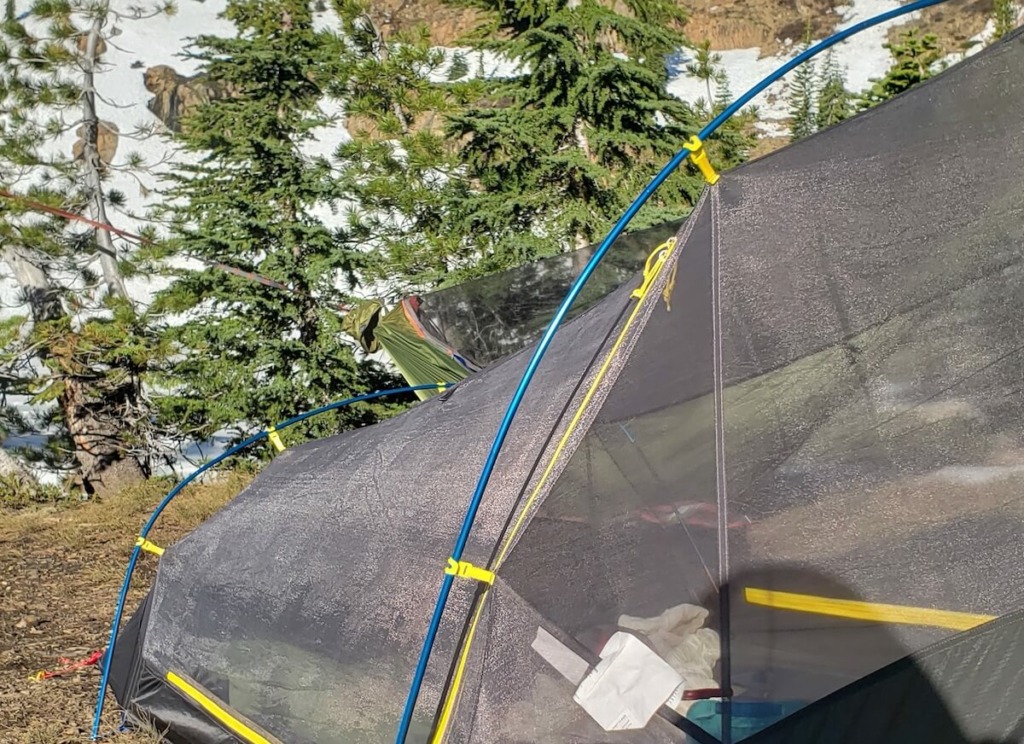
One hack to protect the zippers of your tent is to rub them with a wax candle. Zippers often tend to bunch up or not work in general, especially after getting hit with outdoor elements. Rubbing wax along the inside and outside of your zippers can help them glide more smoothly.
20. Bring a Trash Can
Many popular campsites have trash cans available, but if you are going off the beaten path you will most likely not find one. Bring trash bags with you whenever you go camping, but make life easier by bringing a container for those bags too. A collapsible laundry basket, or even a recycled cardboard box, will do the trick.
21. Make a Repair Kit
You never know what will happen when you are outdoors, so it’s important to come prepared. Whether you’re camping, hiking, fishing, or kayaking all the way around Lake Tahoe, you’ll need supplies if something goes wrong.
Find a small container or bag you can keep your things in and add items like a multi-tool, zip ties, and duct tape. You may even think of a few more things you’d want to bring for possible mishaps.
Camping can be an enjoyable and fulfilling experience but also stressful and challenging if you need to prepare. By using these truck camping hacks, you can make your trip more enjoyable and stress-free. So next time you plan a camping trip, remember these hacks and enjoy your adventure to the fullest!
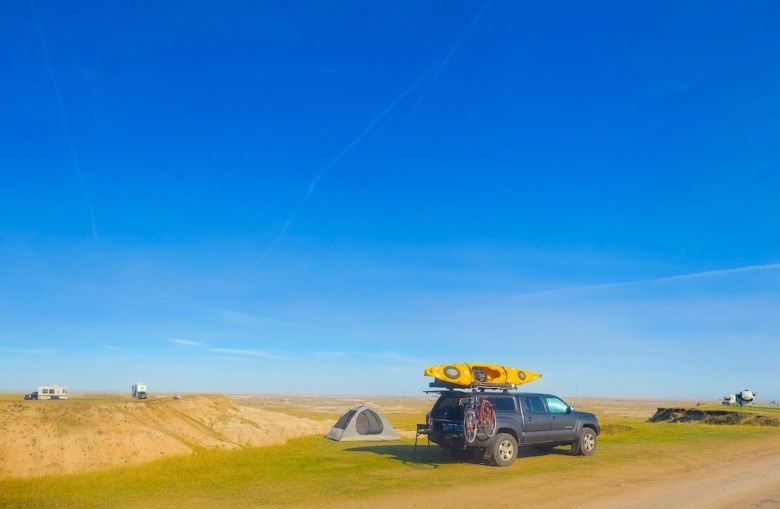
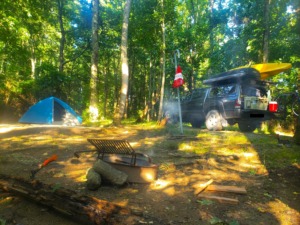
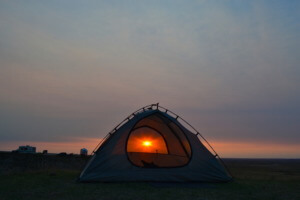

Comments
Using an older cooler for a chuckwagon food box keeps your canned items secure and prevents overheating or freezing from creating issues with food. The cold cooler should get jugs of frozen drinking water, which stops ice melt from creating a soggy mess and dumping the water later at a loss. Just drink it!
Putting the hammock IN the truck – if it has a topper – is also good shelter in inclement weather. It will need some mechanical finesse but it’s roomier when down vs hard cots or built ins. Things can still store underneath.
Long pull out drawers are expensive and ineffecient, but a long pole with hook can drag forward boxed items with hard handles on them, making it easier to work with them. Like backpacking, truck camping can involve too much – refine whats needed, not what can be taken because “the truck carries it all.”
Having a separate battery for power – like an RV – means 12V accessories can be used as that circuit is isolated from the starter battery. One of recent note is a diesel heater – the fan uses very little power, and a gallon of fuel for night time warmth is minimal. In 30 degree weather setting the thermostat results in comfortable sleeping – a good bag at 50F is better than an expedition weight and 25F in the back. Diesel heaters are actually less expensive than a high end down winter bag, and are now being used with tents, too.
A tarp attached to one side of the back rack will expand living space for cooking out of the weather, and allow scents to dissipate rather than trapping them inside the truck, which acts as an attractant for wildlife. Bears aren’t the only critters, raccoons are notorious in the Midwest for destroying camp gear to get to food. Not feeding them is also important, just like not feeding gulls at the beach. Don’t create a problem where there shouldn’t be one – some state parks have to literally hunt down and shoot them to stop their raids. It bears mentioning that policy they have to resort to when nearby campers fail to observe the rule.
Author
Great tips!